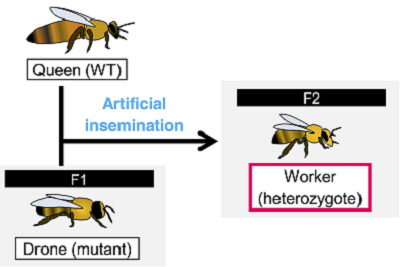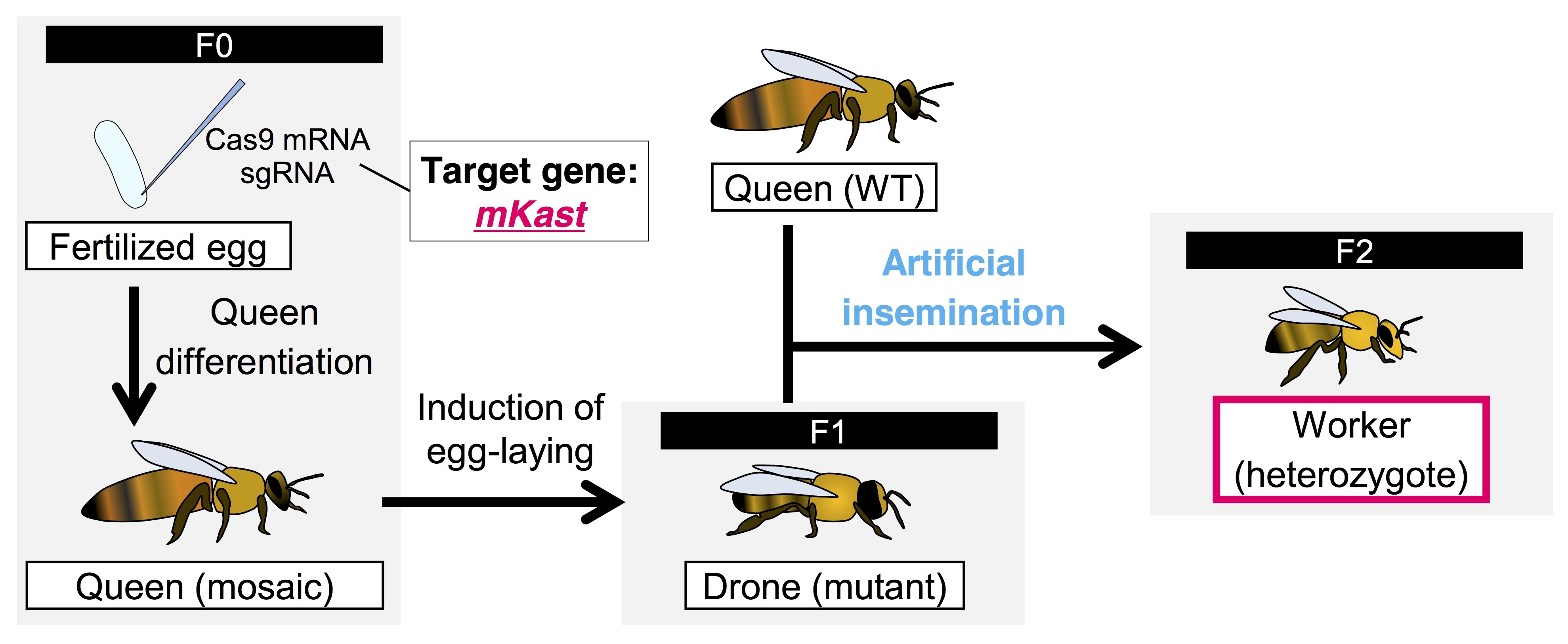Researchers produce first-ever heterozygous mutant honeybees Progress toward functional analysis of sociality-related genes


Researchers targeted mKast genes in fertilized honeybee eggs for genome editing by CRISPR/Cas9, and induced the hatched larvae to differentiate into queens. They obtained mKast mutant drones derived from these "mosaic" queens, and successfully produced heterozygous mKast mutant workers by artificial insemination of a wild-type queen using semen derived from the mutant drones.
© 2018 Hiroki Kohno.
Researchers at the University of Tokyo succeeded for the first time in producing heterozygous mutant honeybees. Their technique could contribute toward the development of methods for the functional analysis of sociality-related genes in honeybees in the future.
The European honeybee (Apis mellifera L.) is a common social insect, which has long been used in scientific studies to investigate the molecular and neural mechanisms that underlie its social behaviors. The honeybee genome has already been sequenced, and various candidate genes and brain regions, which are thought to be related to the insect's social behaviors, have been identified. The likely functions of these candidate genes and brain regions in regulating honeybee social behaviors, however, have not been substantiated, because effective gene manipulation methods in the honeybee have not been available until recently.
Graduate student Hiroki Kohno and Professor Takeo Kubo of the Graduate School of Science at the University of Tokyo previously developed a basic technique of genome editing in the honeybee, and succeeded in producing the first-ever mutant honeybee drones, or male bees. In the present study, the researchers focused on mKast, a gene that is expressed in the higher-order center of the honeybee brain and thought to regulate the behaviors of worker bees, and applied their technique to produce mKast mutant honeybees. They succeeded in producing mKast mutant drones, in which the expression of the mKast protein in the head is completely lost, and heterozygous mKast mutant workers by artificially inseminating a wild-type queen – the natural form as she is found in nature – with semen derived from the mKast mutant drone. These results show that mKast is not indispensable for normal development and sexual maturation, at least in drones.
This is the first report of the production of heterozygous mutant honeybee by artificial insemination using genome-edited drone semen, and indicated that homozygous mutant workers could be produced in the future through breeding under indoor-rearing conditions. It is expected that future acceleration of functional analyses of genes related to sociality will shed light on the molecular mechanisms underlying regulation of social behaviors in the higher-order center of the honeybee brain.
"Honeybees exhibit very interesting social behaviors; the molecular bases underlying the honeybee social behavior, however, remain unknown due to the dearth of gene manipulation methods until recently. We hope that our technique could provide a novel method for the functional analysis of 'sociality-related genes' in this species," says Kohno.
Papers
Hiroki Kohno and Takeo Kubo, "mKast is dispensable for normal development and sexual maturation in the male European honeybee," Scientific Reports: August 21, 2018, doi:10.1038/s41598-018-30380-2.
Link (Publication )
)
Related links
- Graduate School of Science

- Department of Biological Sciences, Graduate School of Science

- Laboratory of Physiological Chemistry, Department of Biological Sciences, Graduate School of Science






